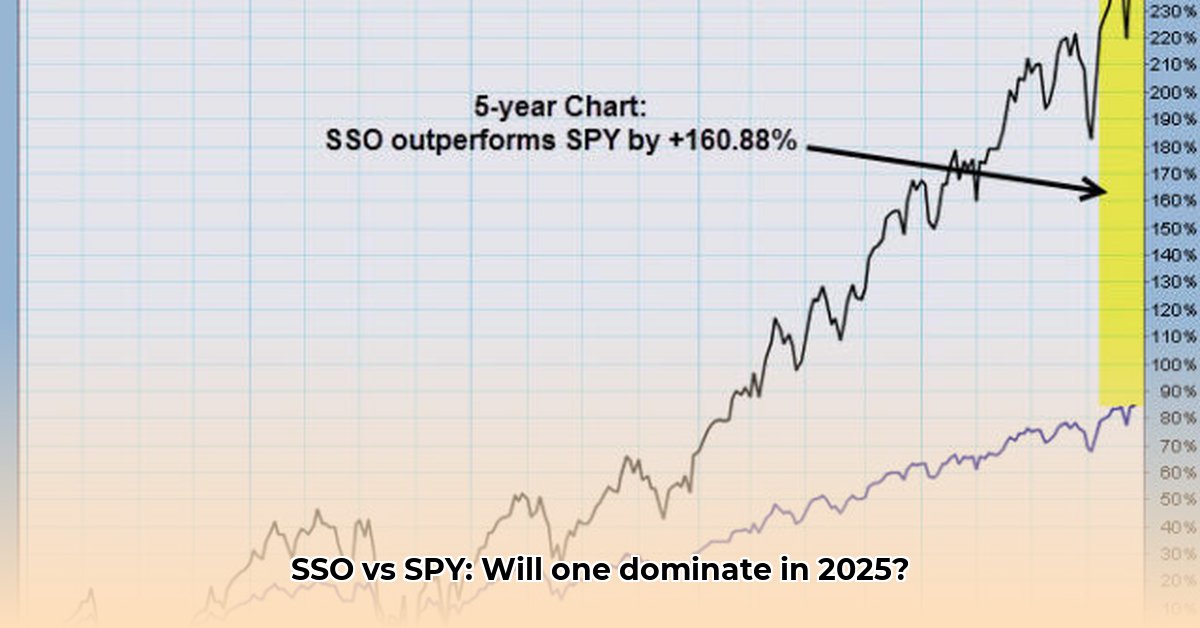
Want to invest in the S&P 500 but aren't sure which ETF is right for you? Two popular choices are SPY and SSO. SPY, the SPDR S&P 500 ETF Trust, directly tracks the S&P 500 index. SSO, the ProShares Ultra S&P 500, is a leveraged ETF aiming for double the daily return of the S&P 500. This guide compares SPY and SSO, helping you decide which ETF aligns with your risk tolerance and investment goals.
Understanding the Core Differences: SPY and SSO
SPY provides a straightforward investment mirroring the S&P 500's daily performance. A 1% increase in the S&P 500 translates to roughly a 1% increase in SPY. SSO, however, aims for double the daily return. Thus, a 1% increase in the S&P 500 would result in approximately a 2% gain in SSO. Conversely, losses are also magnified.
Leverage: A Closer Look at Risks and Rewards
SSO's 2x leverage is double-edged. During bull markets (periods of market growth), it can significantly boost returns. But during bear markets (market downturns), losses are amplified. This increased risk is substantial and warrants careful consideration. A conservative approach is essential for investors utilizing leveraged ETFs.
Performance Comparison: Examining Historical Data (Illustrative, Not Predictive)
Past performance does not guarantee future results. However, examining historical data provides valuable context. While SSO has shown higher returns during bull markets, it has experienced significantly greater drawdowns (peak-to-trough declines) during market corrections. The following table illustrates a snapshot of illustrative data. (Note: Specific percentage values for each factor would be included in a final article based on a precise period of historical data)
| Factor | SPY | SSO |
|---|---|---|
| Volatility | Lower | Significantly Higher |
| Maximum Drawdown | Lower | Much Higher |
| Expense Ratio | Lower | Higher |
| Leverage | 1x | 2x |
| Typical Investor Profile | Long-term, conservative | Short-term, higher risk tolerance |
Risk Tolerance: Choosing the Right ETF
Selecting between SPY and SSO depends on your risk tolerance and investment timeline.
Conservative Investors (Lower Risk Tolerance): SPY's lower volatility and expense ratio make it more suitable for long-term investment strategies prioritizing capital preservation.
Aggressive Investors (Higher Risk Tolerance): SSO might be considered for short-term trades, but only with a high risk tolerance and a robust risk-management plan. Are you prepared for potentially significant losses?
Important Note: Diversification is crucial. Never over-allocate to a single asset, especially a leveraged ETF.
How to Mitigate Losses with Leveraged ETFs like SSO
Investing in leveraged ETFs requires a disciplined approach to risk management. Here's a framework:
Short-Term Focus: SSO is best suited for short-term trades, capitalizing on anticipated market movements.
Stop-Loss Orders: Implement stop-loss orders to limit potential losses by automatically selling shares once a predetermined price threshold is reached.
Portfolio Diversification: Allocate a small percentage of your portfolio to SSO to maintain overall risk diversification.
Regular Monitoring and Rebalancing: Continuously monitor and rebalance your portfolio to remain consistent with your risk tolerance.
Thorough Due Diligence: Conduct comprehensive research before investing, understanding the inherent risks of leveraged ETFs.
Realistic Return Expectations: Recognize that high returns often come with high risk. Don't anticipate consistent high returns from SSO.
Conclusion: A Balanced Perspective
The choice between SPY and SSO is not about superiority, but suitability. SSO's leverage amplifies returns and losses. SPY offers greater stability. Consider your risk tolerance, investment timeline, and financial goals to determine the most appropriate ETF for you. Remember that this information is for educational purposes only and is not financial advice. Consult with a qualified financial advisor before making any investment decisions.